The 5 Muscles Athletes Neglect and How to Train Them
The human body is a thing of wonder.
When everything works in harmony, it’s like an orchestra in which each player knows his or her part. But when something’s out of whack, it can throw off the whole performance. That’s why it’s essential for athletes to train their bodies intelligently and efficiently. One of the most common performance-stifling issues young athletes face are muscle imbalances. Muscle imbalances are weaknesses or mobility issues that typically stem from underdevelopment of a specific muscle or muscle group. Fixing these imbalances is critical if you want to be the most explosive, healthy and successful athlete you can be. These are the five muscles most often neglected by athletes.
1. Upper Back
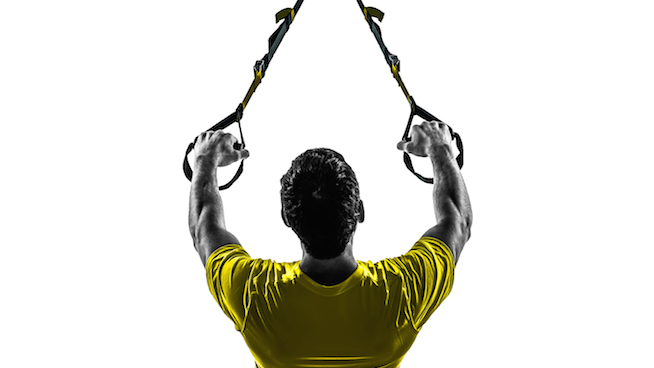
Young athletes love to work the front sides of their body. Bench Press, Curls, etc. Those target the muscles you see in the mirror every day, so it’s no wonder many athletes are enamored of them. However, this habit doesn’t mesh well with our lifestyles. In our society, we often find ourselves with our hands in front of us, our necks craned in front of our chests, our shoulders rolled up and forward and our backs rounded. Whether you’re driving a car, working on your laptop, taking notes in class or staring at your phone, that position dominates the modern lifestyle. Over time, this hunched position tightens the muscles on the front of your body (such as the chest) and lengthens the muscles on the back of your body (such as the upper back).
To fix this common muscle imbalance, strengthening the upper-back is critical. The muscles in this area include the rhomboids, deltoids and latissimus dorsi. “More often than not, [young athletes] have already developed a pretty significant imbalance from front-to-back,” says Kasey Esser, CSCS and owner of Essers of Los Angeles.
To address this issue, Esser recommends an exercise known as Batwing Rows. They are great for efficiently strengthening the upper-back, because they eliminate any potential to cheat on the rep and force a deep isometric contraction of the rhomboids.
To perform Batwing Rows, lie on your stomach on a flat or incline bench. Hold dumbbells or kettlebells directly under your shoulders. If you’re using a flat bench, the dumbbells should be on the floor and your arms should be slightly bent. Pull your shoulders back and row the weights until your thumbs are in your armpits. Squeeze your shoulder blades together at the top of the movement and hold for a set count. Slowly lower and repeat.
RELATED: Train Like Batman to Build a Stronger Back
How long you hold at the top of the movement depends on your progress. “In the beginning of [a young athlete’s] program, I’ll usually have them do iso holds for 10-15 seconds so that they feel their rhomboids light up. They most likely haven’t even used these muscles before, so it’s essential to establish a mind-muscle connection before progression to heavier weight and performing them for reps,” Esser says. Once you get the hang of it, you can perform 3 sets of 5 reps with a 2-second hold at the top.
2. Hamstrings
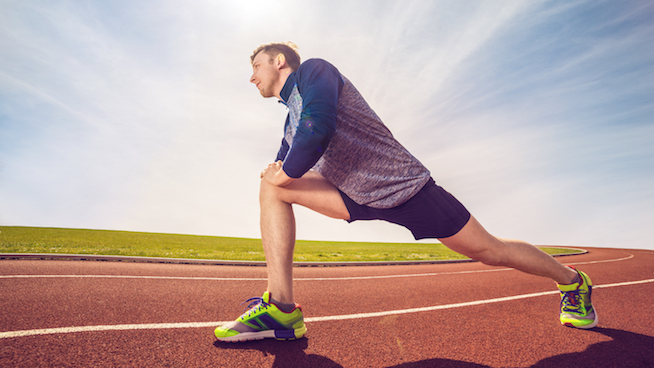
The hamstrings are neglected for many of the same reasons the upper-back is neglected. The average person has trouble engaging their hamstrings due to their lifestyle choices. When you’re sitting in a chair all day, your hamstrings aren’t engaged. And even when people perform lower-body exercises, they often gravitate toward quad-centric movements. The result is neglected hamstrings that rob athletes of their explosiveness and make them more susceptible to injury.
“The biggest area I see being neglected are the hamstrings. I mean that both in strength and flexibility. Way too often I’ll have an athlete stretch his hamstrings and barely be able to get his/her hands to the ground. When I ask ‘why are your hamstrings so tight?’ I hear ‘I just have tight hamstrings, man.’ [No,] It’s straight up neglect!,” says Ben Boudro, CSCS and owner of Xceleration Fitness. “Tight hamstrings lead to low-back, knee, and all kinds of chronic pain injuries.”
Addressing weak, tight hamstrings should be about increasing both mobility and strength. Boudro recommends two stretches—Hamstring Swings and The World’s Greatest Stretch. “These both should be done minimally once per day,” Boudro says. “It takes five minutes but can open the hips and allow the hamstrings to be more mobile and prevent nagging injuries.”
For strengthening the hamstrings, focus on exercises like Squats and Nordic Hamstring Curls. Both Boudro and Esser also highly recommend Single-Leg Deadlifts. “I’ve found that those who really master the Single-Leg Deadlift technique tend to avoid injury. They obviously require balance, but more importantly, it allows them to focus on the muscles being worked versus just hoisting up a heavy load,” Esser says. “Go slow on the way back up, letting your back leg float up before powerfully pulling the leg back through and engaging the glutes to finish.”
3. Adductors
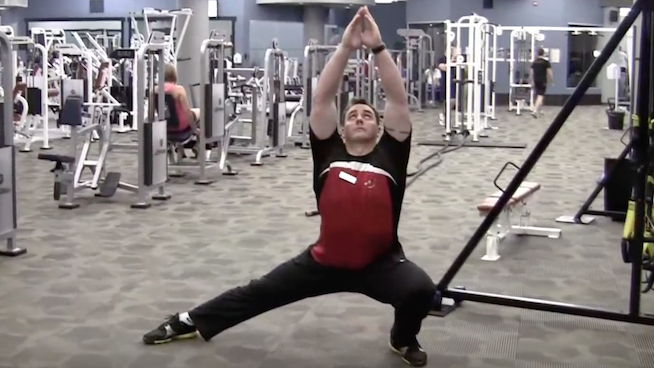
The adductor muscles are a group of four muscles that originate high up near the groin. They help bring your legs toward the center of your body. They also assist in hip flexion and extension. Strengthening your adductors can improve athleticism (especially agility) and greatly reduce your risk of injury.
Aaron Bonaccorsy, a performance coach at STACK Velocity Sports Performance, states that weak, tight adductors are common in many young athletes. Most common lower-body exercises don’t target the adductors, or they allow for compensations that work around weak adductors.
The good news is that strengthening the adductors requires just a handful of focused exercises. Bonaccorsy recommends Isometric Ball Squeezes. “The athlete lies on their back and squeezes a soccer ball between their knees as hard as possible for 10-20 seconds in a bridge position,” Bonaccorsy says. Lateral Lunges are another smart choice, as demonstrated here by Dean Somerset, CSCS and Exercise Physiologist:
4. Rotator Cuff
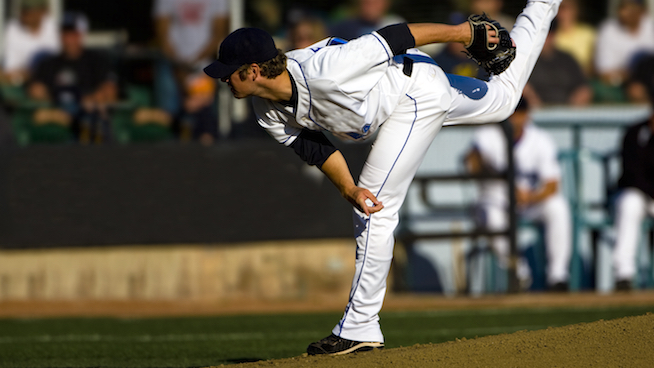
The rotator cuff muscles are a group of muscles that stabilize the shoulder. They include the supraspinatus muscle, the infraspinatus muscle, the teres minor muscle and the subscapularis muscle. These muscles are important for any athlete, but they’re especially critical for baseball players.
Tony Bonvecchio, CSCS and strength coach at Cressey Sports Performance, says that many young players don’t train their rotator cuff muscles the right way. “We work with mostly baseball players. Rotator cuff is so important for good control of the humerus. When you’re putting your shoulder through such aggressive ranges of motion and delivering it at high speeds like you do in baseball, you need a really strong rotator cuff and you need rotator cuff timing—those muscles need to turn on at the right time,” Bonvecchio says.
To strengthen your rotator cuff muscles, Bonvecchio recommends two external rotation variations—Half-Kneeling Cable External Rotations and Side-Lying External Rotations:
https://youtu.be/6ilEpG8YziY
5. “Grip” Muscles
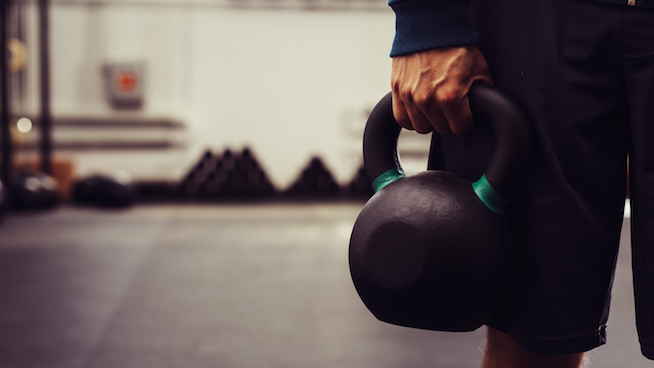
The muscles in your hands and forearms often get overlooked in favor of the biceps and triceps, but they play a pivotal role in your athletic capabilities. If you neglect these muscles, your grip strength will suffer.
“Grip strength is one of the most underrated aspects of fitness. Think of an exercise like the Pull-Up. You could have the strongest back in the gym, but if you can’t maintain your hold on the bar, you won’t be able to do many reps. The same applies to nearly every sports skill that involves your hands, like throwing a ball or swinging a bat or racquet. If your grip is weak, you simply won’t be able to apply your full strength and power to the movement,” says Andy Haley, Performance Director at STACK.
Check out the link below for an awesome, efficient grip workout.
RELATED: Build a Vice-Like Grip in Just 10 Minutes With This Workout
RECOMMENDED FOR YOU
MOST POPULAR
The 5 Muscles Athletes Neglect and How to Train Them
The human body is a thing of wonder.
When everything works in harmony, it’s like an orchestra in which each player knows his or her part. But when something’s out of whack, it can throw off the whole performance. That’s why it’s essential for athletes to train their bodies intelligently and efficiently. One of the most common performance-stifling issues young athletes face are muscle imbalances. Muscle imbalances are weaknesses or mobility issues that typically stem from underdevelopment of a specific muscle or muscle group. Fixing these imbalances is critical if you want to be the most explosive, healthy and successful athlete you can be. These are the five muscles most often neglected by athletes.
1. Upper Back

Young athletes love to work the front sides of their body. Bench Press, Curls, etc. Those target the muscles you see in the mirror every day, so it’s no wonder many athletes are enamored of them. However, this habit doesn’t mesh well with our lifestyles. In our society, we often find ourselves with our hands in front of us, our necks craned in front of our chests, our shoulders rolled up and forward and our backs rounded. Whether you’re driving a car, working on your laptop, taking notes in class or staring at your phone, that position dominates the modern lifestyle. Over time, this hunched position tightens the muscles on the front of your body (such as the chest) and lengthens the muscles on the back of your body (such as the upper back).
To fix this common muscle imbalance, strengthening the upper-back is critical. The muscles in this area include the rhomboids, deltoids and latissimus dorsi. “More often than not, [young athletes] have already developed a pretty significant imbalance from front-to-back,” says Kasey Esser, CSCS and owner of Essers of Los Angeles.
To address this issue, Esser recommends an exercise known as Batwing Rows. They are great for efficiently strengthening the upper-back, because they eliminate any potential to cheat on the rep and force a deep isometric contraction of the rhomboids.
To perform Batwing Rows, lie on your stomach on a flat or incline bench. Hold dumbbells or kettlebells directly under your shoulders. If you’re using a flat bench, the dumbbells should be on the floor and your arms should be slightly bent. Pull your shoulders back and row the weights until your thumbs are in your armpits. Squeeze your shoulder blades together at the top of the movement and hold for a set count. Slowly lower and repeat.
RELATED: Train Like Batman to Build a Stronger Back
How long you hold at the top of the movement depends on your progress. “In the beginning of [a young athlete’s] program, I’ll usually have them do iso holds for 10-15 seconds so that they feel their rhomboids light up. They most likely haven’t even used these muscles before, so it’s essential to establish a mind-muscle connection before progression to heavier weight and performing them for reps,” Esser says. Once you get the hang of it, you can perform 3 sets of 5 reps with a 2-second hold at the top.
2. Hamstrings

The hamstrings are neglected for many of the same reasons the upper-back is neglected. The average person has trouble engaging their hamstrings due to their lifestyle choices. When you’re sitting in a chair all day, your hamstrings aren’t engaged. And even when people perform lower-body exercises, they often gravitate toward quad-centric movements. The result is neglected hamstrings that rob athletes of their explosiveness and make them more susceptible to injury.
“The biggest area I see being neglected are the hamstrings. I mean that both in strength and flexibility. Way too often I’ll have an athlete stretch his hamstrings and barely be able to get his/her hands to the ground. When I ask ‘why are your hamstrings so tight?’ I hear ‘I just have tight hamstrings, man.’ [No,] It’s straight up neglect!,” says Ben Boudro, CSCS and owner of Xceleration Fitness. “Tight hamstrings lead to low-back, knee, and all kinds of chronic pain injuries.”
Addressing weak, tight hamstrings should be about increasing both mobility and strength. Boudro recommends two stretches—Hamstring Swings and The World’s Greatest Stretch. “These both should be done minimally once per day,” Boudro says. “It takes five minutes but can open the hips and allow the hamstrings to be more mobile and prevent nagging injuries.”
For strengthening the hamstrings, focus on exercises like Squats and Nordic Hamstring Curls. Both Boudro and Esser also highly recommend Single-Leg Deadlifts. “I’ve found that those who really master the Single-Leg Deadlift technique tend to avoid injury. They obviously require balance, but more importantly, it allows them to focus on the muscles being worked versus just hoisting up a heavy load,” Esser says. “Go slow on the way back up, letting your back leg float up before powerfully pulling the leg back through and engaging the glutes to finish.”
3. Adductors

The adductor muscles are a group of four muscles that originate high up near the groin. They help bring your legs toward the center of your body. They also assist in hip flexion and extension. Strengthening your adductors can improve athleticism (especially agility) and greatly reduce your risk of injury.
Aaron Bonaccorsy, a performance coach at STACK Velocity Sports Performance, states that weak, tight adductors are common in many young athletes. Most common lower-body exercises don’t target the adductors, or they allow for compensations that work around weak adductors.
The good news is that strengthening the adductors requires just a handful of focused exercises. Bonaccorsy recommends Isometric Ball Squeezes. “The athlete lies on their back and squeezes a soccer ball between their knees as hard as possible for 10-20 seconds in a bridge position,” Bonaccorsy says. Lateral Lunges are another smart choice, as demonstrated here by Dean Somerset, CSCS and Exercise Physiologist:
4. Rotator Cuff

The rotator cuff muscles are a group of muscles that stabilize the shoulder. They include the supraspinatus muscle, the infraspinatus muscle, the teres minor muscle and the subscapularis muscle. These muscles are important for any athlete, but they’re especially critical for baseball players.
Tony Bonvecchio, CSCS and strength coach at Cressey Sports Performance, says that many young players don’t train their rotator cuff muscles the right way. “We work with mostly baseball players. Rotator cuff is so important for good control of the humerus. When you’re putting your shoulder through such aggressive ranges of motion and delivering it at high speeds like you do in baseball, you need a really strong rotator cuff and you need rotator cuff timing—those muscles need to turn on at the right time,” Bonvecchio says.
To strengthen your rotator cuff muscles, Bonvecchio recommends two external rotation variations—Half-Kneeling Cable External Rotations and Side-Lying External Rotations:
https://youtu.be/6ilEpG8YziY
5. “Grip” Muscles

The muscles in your hands and forearms often get overlooked in favor of the biceps and triceps, but they play a pivotal role in your athletic capabilities. If you neglect these muscles, your grip strength will suffer.
“Grip strength is one of the most underrated aspects of fitness. Think of an exercise like the Pull-Up. You could have the strongest back in the gym, but if you can’t maintain your hold on the bar, you won’t be able to do many reps. The same applies to nearly every sports skill that involves your hands, like throwing a ball or swinging a bat or racquet. If your grip is weak, you simply won’t be able to apply your full strength and power to the movement,” says Andy Haley, Performance Director at STACK.
Check out the link below for an awesome, efficient grip workout.
RELATED: Build a Vice-Like Grip in Just 10 Minutes With This Workout












